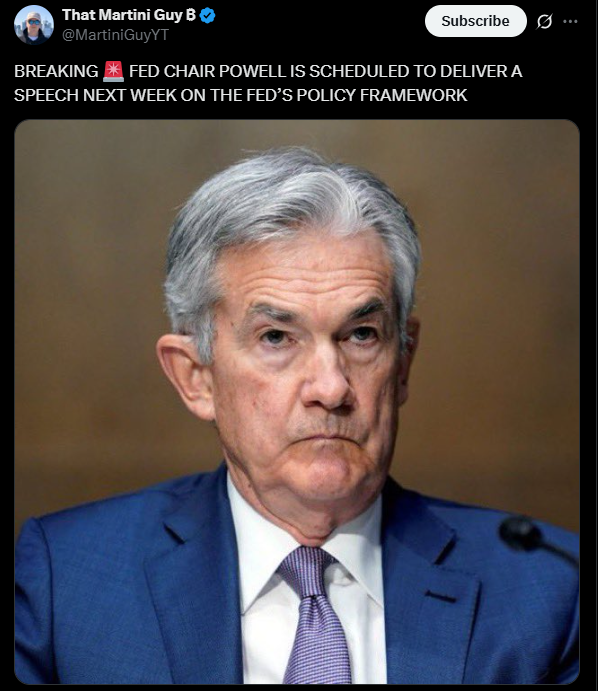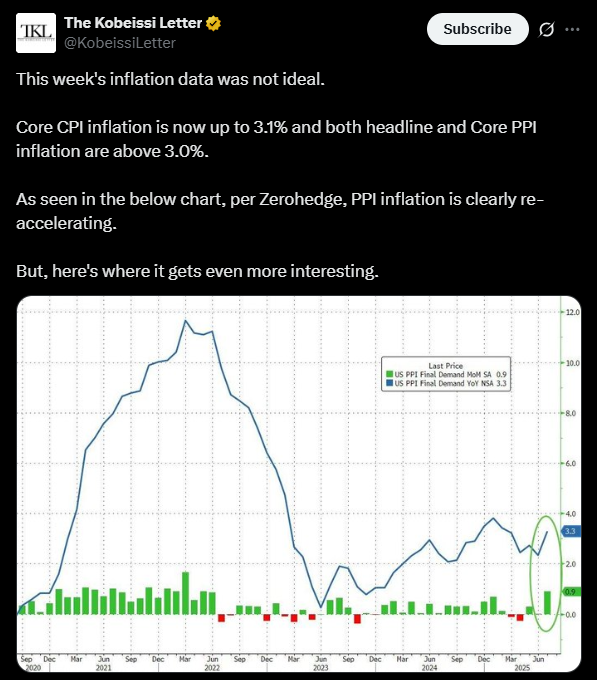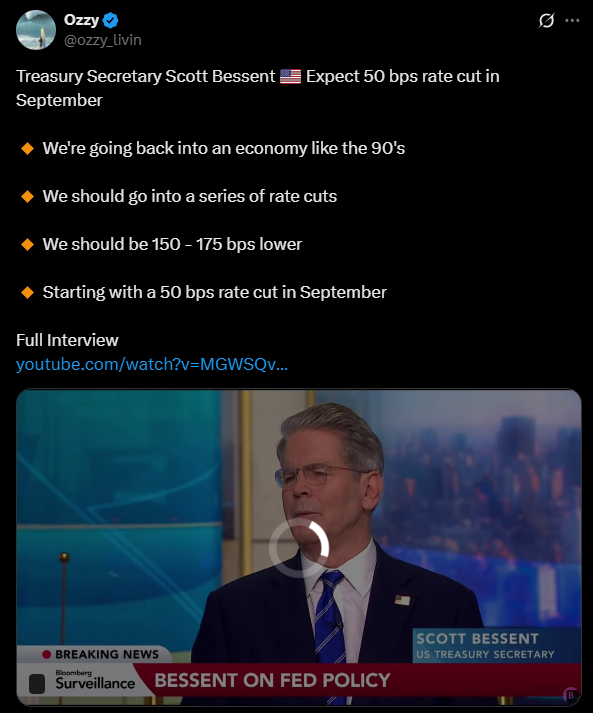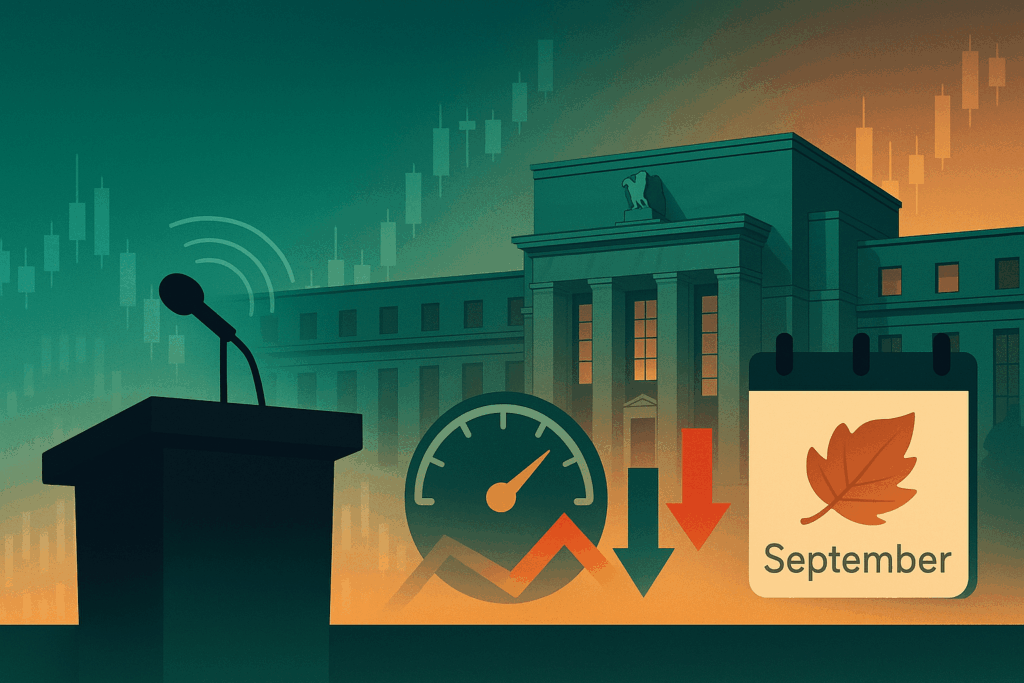Key Insights
- Jerome Powell is set to speak on August 22 at the Jackson Hole central banking conference.
- Fed officials are split over cutting rates as inflation and job data send mixed signals.
- Despite internal policy divisions, the markets are placing a 93% chance on a September rate cut.
Federal Reserve Chair Powell is set to deliver one of the most anticipated speeches of the year on 22 August. He will give this speech at the Fed’s annual Jackson Hole conference in Wyoming.
He is expected to make remarks about the US economy and review the Fed’s policy framework. The speech comes amid relatively hotter PPI and inflation data alongside the pressure from Trump’s tariffs.
The combination has raised hopes for a Fed rate cut. Many expect a quarter-point reduction at the September 16–17 meeting.
FED, Powell Face Balancing Act on Rates
One of the biggest questions in policy discussions is, “Is stubborn inflation a bigger risk right now than slower hiring?” The weak job growth has persuaded some policymakers to support an immediate rate cut.
Hiring averaged at just 35,000 jobs per month from May through July. However, it is down from 123,000 a year ago. The unemployment rate, however, remains relatively low at 4.2%.

Other officials are pointing to the persistent inflationary pressures, even in sectors unaffected by tariffs. They argue that the Fed should keep its interest rates high to prevent prices from falling further. For context, the current benchmark rate stands at 4.3%.
Diverging Views Inside the Fed
Fed Board member Michelle Bowman said the central bank should focus on employment risks. She cited progress toward the 2% inflation target and signs of weaker demand as reasons for this target.
On the other hand, Chicago Fed President Austan Goolsbee disagrees. He cautioned that some service prices are rising faster than expected. He also warned that inflation could remain well above target if these gains continue.
Finally, San Francisco Fed President Mary Daly believes the labor market has softened. He also believes that there is a need for a policy adjustment soon.
In contrast, Atlanta Fed President Raphael Bostic wants more time to monitor the tariffs. He noted that they could lead to changes in production that keep inflation higher for longer.
Market Expectations Strong for September Cut
Despite internal disagreements, the markets are confident that a rate cut is incoming. For example, the CME FedWatch data shows that traders are pricing in a 93% chance of a quarter-point reduction next month.
That expectation has strengthened after the August 1 jobs report showed weaker hiring and downward revisions to previous months. This week’s mild consumer inflation reading has also put investors at ease over persistent price increases.

However, Thursday’s wholesale inflation report showed a rise in goods and service prices before reaching consumers. That outcome may limit the Fed’s willingness to cut rates aggressively. In other words, a half-point cut is unlikely.
Treasury Push Meets Fed Resistance
Treasury Secretary Scott Bessent has called for a larger half-point cut in September. However, Fed officials have pushed back and are saying that the economy does not justify such a move.

Tim Duy is an economist at SGH Macro. He said the Fed may have to raise its inflation forecast when it updates its economic projections in September.
Inflation is already near the FED’s year-end target, and cutting rates while predicting higher prices could be challenging. So what should investors watch for on 22 August?
In all, Powell’s Jackson Hole speech will be scrutinized for any hints about the September decision. Markets are watching how the Fed balances inflation control with job market support. This trade-off will be key to its next policy move.

